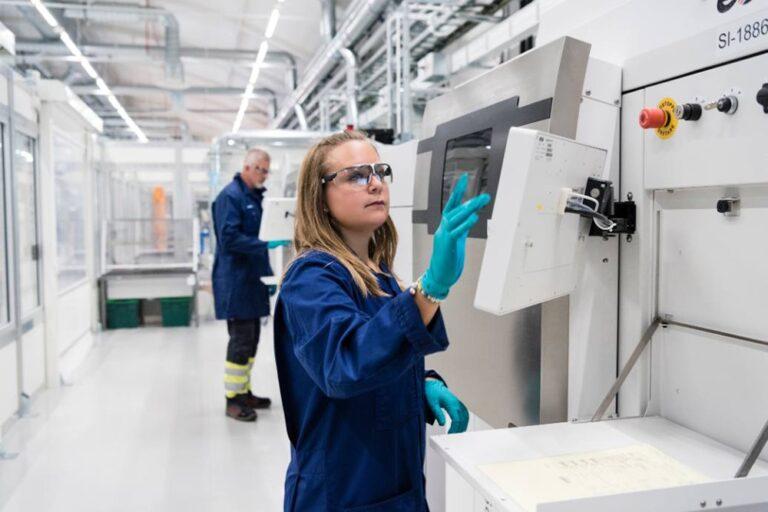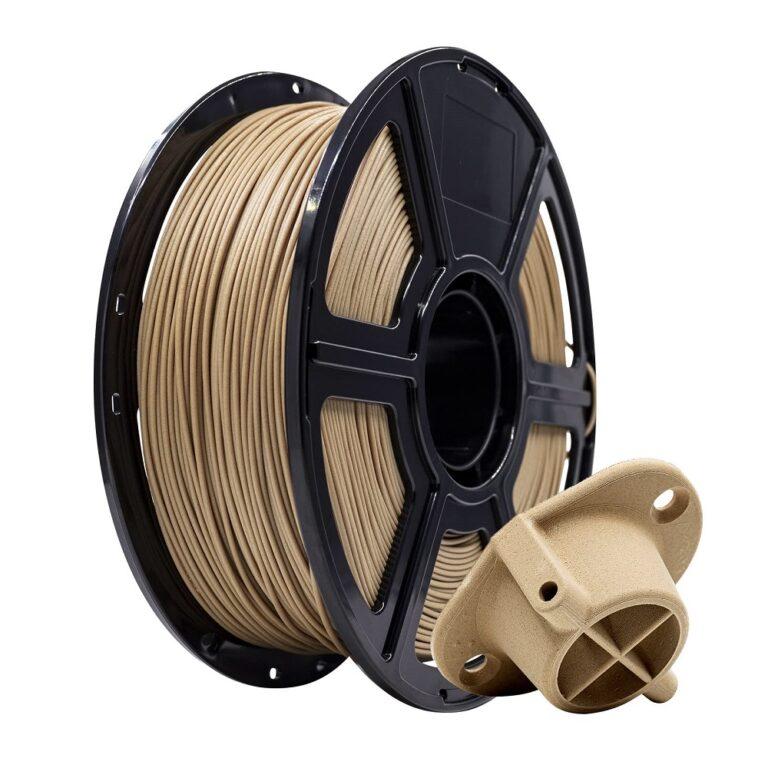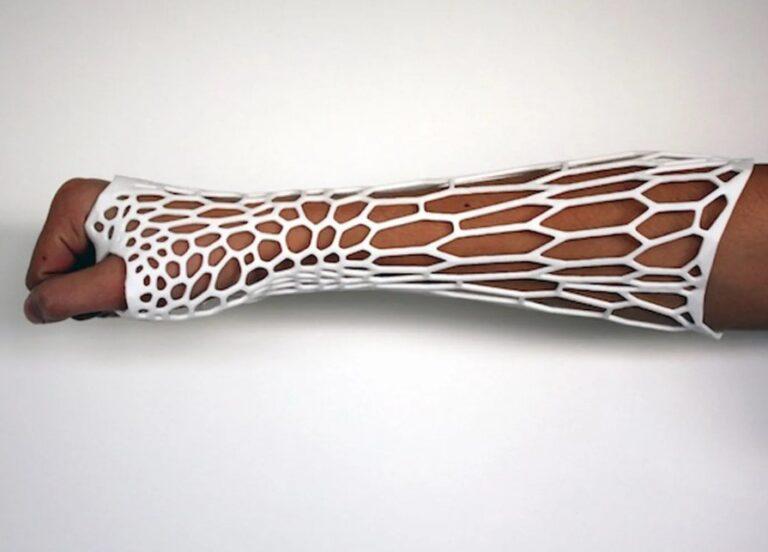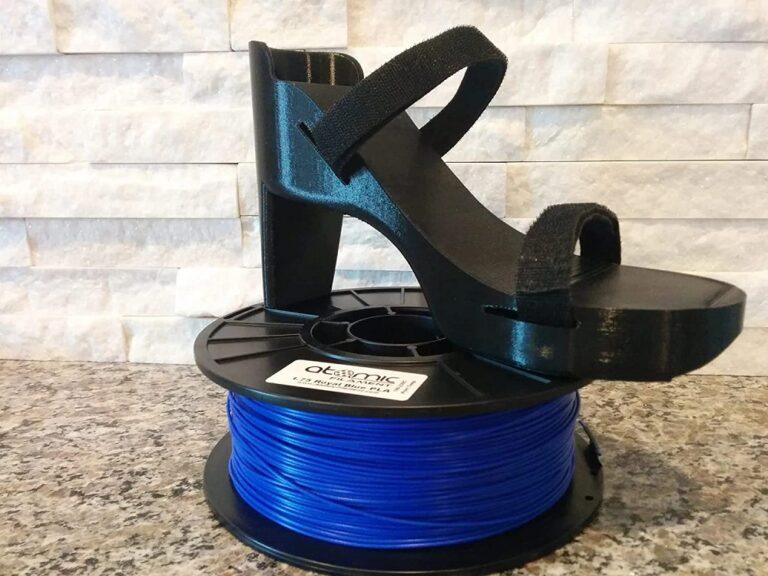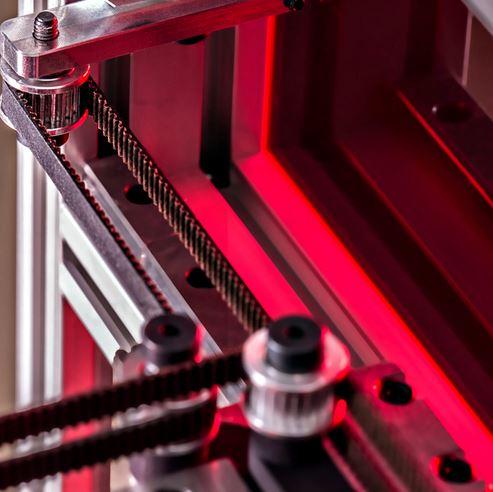Top 10 Major Polymer Filament Suppliers in the World
Introduction
Polymer filament suppliers are the lifeblood of the 3D printing world. Without them, the transformative power of 3D printing technology would stall. They provide the essential material that makes it possible to turn digital dreams into tangible reality.
In the swiftly evolving landscape of 3D printing, the significance of high-quality polymer filaments cannot be overstated. It’s akin to the importance of a strong foundation when building a house. Without it, the structure is prone to collapse. Similarly, without top-tier filament, a 3D-printed object might lack durability, precision, or even aesthetic appeal.
But, where do these filaments come from? The answer lies with polymer filament suppliers. These entities shoulder the responsibility of producing and providing these essential materials to the market. They ensure steady availability, consistent quality, and continual innovation in the types of filament on offer.
In the following sections, we’ll delve deeper into understanding polymer filaments and their role in 3D printing. More importantly, we’ll shed light on the top 10 major polymer filament suppliers in the world. They are the unsung heroes, fueling the progress of the 3D printing industry, one filament at a time.
A brief overview of the polymer filament industry
Venturing into the realm of the polymer filament industry, we encounter a vibrant and rapidly evolving space. Born out of the need for 3D printing materials, this industry has grown exponentially over the years.
Initially, polymer filaments found their primary use in prototyping. Businesses were keen on turning their concepts into physical models swiftly and cost-effectively. But as the technology matured, so did its applications. Gradually, we witnessed the expansion of polymer filaments into industries like healthcare, aerospace, automotive, and more.
On the production front, innovation is the name of the game. Suppliers constantly experiment with different materials and processes to enhance filament properties. The result? A wide array of filaments to suit various needs, from PLA and ABS to more exotic blends like wood-filled or metal-filled filaments.
Despite the progress, the industry faces its share of challenges. Maintaining consistency in filament quality and dealing with environmental concerns are primary them. Nevertheless, the industry is responding. It’s driving towards sustainable practices and tighter quality control.
In essence, the polymer filament industry is an exciting space, fueled by innovation and challenged by its responsibility towards the environment. It’s an industry that doesn’t just support the world of 3D printing but actively shapes it.
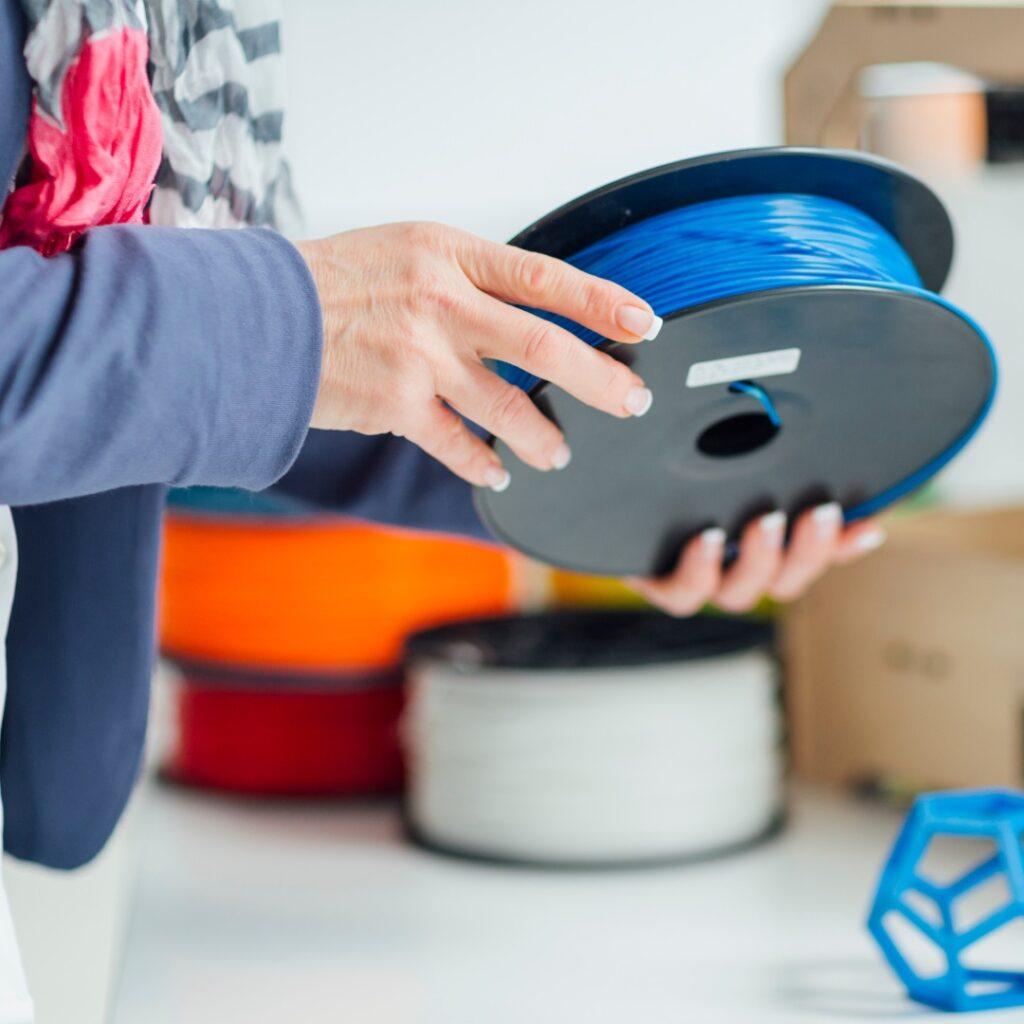
Importance of polymer filaments in various sectors
“The role of polymer filaments in various sectors is nothing short of transformational. Their flexibility, durability, and affordability have made them a go-to resource across a range of industries.
In the realm of healthcare, polymer filaments work wonders. They assist in creating customized medical devices, prosthetics, and even organ models for surgical planning. This has revolutionized patient care, reducing costs and increasing accessibility.
Turning our gaze towards the aerospace sector, the impact is significant. Polymer filaments are used to manufacture lightweight components for aircraft and satellites. Their usage reduces weight, improves fuel efficiency, and enhances overall performance.
When it comes to the automotive industry, polymer filaments are integral. They enable rapid prototyping, which accelerates the design process. Moreover, they’re used to produce end-use parts, contributing to lighter, more fuel-efficient vehicles.
The construction industry is not left out. From architectural models to custom fixtures, polymer filaments are steadily gaining ground. They foster innovation, reduce waste, and allow for intricate designs previously impossible with traditional methods.
In the realm of education, these filaments are a boon. They make 3D printing accessible to students, sparking creativity and fostering hands-on learning. This paves the way for future innovators and problem solvers.
Lastly, let’s not forget the impact on the environment. Biodegradable polymer filaments, like PLA, are gaining popularity. They promise a more sustainable future for 3D printing, aligning innovation with environmental consciousness.
In conclusion, polymer filaments are not just a tool for 3D printing. They are a catalyst for change, driving innovation and sustainability across multiple sectors.”
Understanding Polymer Filaments
As we navigate further into the world of 3D printing, understanding polymer filaments becomes crucial. These filaments are the building blocks of 3D printed objects, carrying the essence of their form and function. But what exactly are polymer filaments? How do they contribute to the magic of 3D printing? In the following section, we’ll unravel these questions. We’ll dive into the science behind polymer filaments, exploring their types, properties, and applications. Through this journey, we’ll gain a better grasp of their role in shaping the 3D printing landscape.
What are polymer filaments?
Polymer filaments are the foundation of 3D printing, but what are they exactly? Simply put, they are thin strands of plastic, typically 1.75mm or 2.85mm in diameter, used as raw material in most 3D printers.
These filaments are made of polymers, long chains of molecules that give the filament its unique properties. The type of polymer used can vary, leading to different types of filament. For instance, PLA (Polylactic Acid) is a biodegradable polymer derived from plant-based resources. ABS (Acrylonitrile Butadiene Styrene), on the other hand, is an oil-based polymer known for its strength and durability.
During the 3D printing process, these filaments are heated and extruded through a nozzle. This transforms them from a solid state into a semi-liquid form. The printer then deposits this material layer by layer to build the desired object.
The choice of filament can greatly influence the properties of the final product. It can affect strength, flexibility, temperature resistance, and even the finish of the 3D printed object. As such, understanding the nature of polymer filaments is key to mastering the art of 3D printing.
In summary, polymer filaments are the ‘ink’ of 3D printers. They’re fundamental to transforming digital designs into physical objects. Their diverse range and properties are what make 3D printing such a versatile technology.
Uses and applications of polymer filaments
Polymer filaments play a starring role in a variety of applications, thanks to the versatility of 3D printing technology. Let’s explore some real-world examples.
In the medical field, polymer filaments are game-changers. For instance, they are used to create customized prosthetics. A young girl named Emma, born with a condition limiting her arm movement, received a 3D printed exoskeleton. Made from PLA filament, it allowed her to lift her arms and play like other kids.
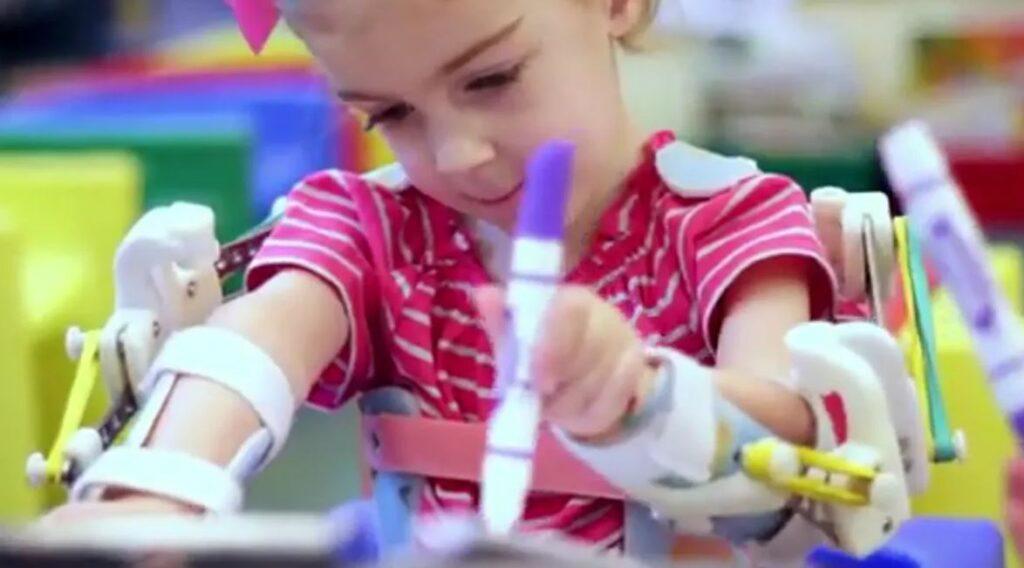

Next, we turn to the automotive industry. Bugatti, the luxury car manufacturer, used polymer filaments to 3D print a brake caliper. This resulted in a part that was lighter, yet stronger than the traditional metal component.
In the realm of architecture, polymer filaments enable architects to create detailed scale models of their designs. The world-renowned architectural firm, Foster + Partners, regularly uses 3D printing for this purpose. It allows them to visualize and refine their ideas before actual construction.
Even in the food industry, these filaments find a place. A company called Natural Machines uses food-safe polymer filaments to 3D print food! Their device, called the Foodini, can print complex food items like pizza and pasta, opening up exciting possibilities for the culinary world.
Lastly, in education, polymer filaments are instrumental in making learning more interactive. For example, a school in Australia introduced 3D printing to teach students about ancient Egypt. Students designed and printed their own pyramids, sphinxes, and even mummies!
In conclusion, the uses and applications of polymer filaments are as diverse as they are fascinating. They are proving to be a powerful tool, transforming industries and enhancing lives.
Criteria for Selecting a Polymer Filament Supplier
Choosing a polymer filament supplier is a critical decision that can significantly influence your 3D printing outcomes. Several factors come into play when making this choice. Initially, we have to consider the quality of products. A high-quality filament ensures consistent results and reduces the risk of print failures. Next, the supplier’s reputation in the industry speaks volumes about their reliability and commitment to customer satisfaction. Additionally, the range of products offered by the supplier is crucial. It determines the versatility of your 3D printing capabilities. Finally, pricing and customer service cannot be overlooked. They ensure that you get the best value for your money and support when needed. In the sections below, we’ll delve deeper into these criteria, shedding light on how to make an informed choice of a polymer filament supplier.
Quality of products
When it comes to 3D printing, the quality of polymer filaments plays a pivotal role. The poor quality filament can lead to a plethora of issues, such as inconsistent extrusion, clogging of the nozzle, and ultimately, failed prints.
Firstly, a high-quality filament exhibits a uniform diameter throughout its length. Even slight variations can cause irregularities in the printed object. It’s essential to choose a supplier that guarantees this consistency.
Secondly, the purity of the filament is critical. Filaments contaminated with foreign particles can disrupt the printing process and affect the quality of the print. Suppliers who ensure the purity of their products stands out in this aspect.
Moreover, the filament’s performance under heat is a quality determinant. It should melt evenly without emitting harmful fumes. This is particularly important for ensuring smooth extrusion and a safe printing environment.
Lastly, the packaging of the filament matters. Quality suppliers vacuum-seal their products to prevent moisture absorption, which can degrade the filament’s properties.
In conclusion, the quality of polymer filaments significantly impacts the success of your 3D printing endeavors. Hence, it’s crucial to choose a supplier that emphasizes stringent quality control in their products.
Reputation in the industry
Reputation carries significant weight when selecting a polymer filament supplier. A supplier’s standing in the industry serves as a testament to their track record and reliability.
Firstly, a reputable supplier is likely to deliver consistent product quality. They have a reputation to uphold, and inconsistency could tarnish their image. Thus, they put in the effort to maintain high standards.
Moreover, a well-regarded supplier often has extensive industry experience. This experience equips them with the knowledge to handle diverse customer needs and address potential issues swiftly.
Furthermore, a supplier’s reputation is also reflected in their customer reviews. Positive feedback from previous and current clients can provide insights into the supplier’s product quality, service, and reliability.
Lastly, a reputable supplier often complies with industry standards and regulations. This commitment to adherence highlights their professionalism and respect for customer safety.
In summary, the reputation of a filament supplier in the industry can provide a valuable snapshot of its credibility and commitment to quality. Therefore, it’s a crucial factor to consider in your selection process.”
Range of products offered
The range of products offered by a polymer filament supplier can greatly influence your 3D printing capabilities. The wider the range, the more flexibility you have in creating diverse prints.
Firstly, a supplier offering a broad array of filament types such as PLA, ABS, PETG, and TPU allows for greater versatility. Each type has unique properties, suitable for different applications.
Secondly, the color variety is another key consideration. A supplier with an extensive color palette allows you to create vibrant and visually appealing prints.
Moreover, the filament diameter is a crucial aspect. Most 3D printers use either 1.75mm or 3mm filaments. A supplier offering both sizes caters to a broader range of printer models.
Additionally, some suppliers may offer specialty filaments. These include wood-filled, metal-filled, glow-in-the-dark, and soluble filaments. They open up new possibilities for creative and functional prints.
In conclusion, a wide range of products offered by a supplier enhances your creative freedom and adaptability in 3D printing. Therefore, it’s an essential criterion in selecting a polymer filament supplier.
Pricing and customer service
Pricing and customer service are crucial factors when choosing a polymer filament supplier. They directly impact your experience and the value you get for your money.
Firstly, competitive pricing is vital. While quality shouldn’t be compromised for cost, a fair price for a high-quality filament is a winning combination. It’s important to select a supplier that offers this balance.
Secondly, consider the supplier’s pricing transparency. Hidden charges can inflate costs. A supplier who openly communicates all costs fosters trust and aids in financial planning.
Next, customer service plays a significant role. Problems can arise; perhaps the filament doesn’t meet expectations or the delivery is delayed. Here, excellent customer service is indispensable. A supplier that responds promptly and resolves issues effectively improves your overall experience.
Furthermore, some Polymer Filament Suppliers offer additional services, like technical support or guidance on filament selection. These added values can enhance your 3D printing process.
In conclusion, the price of polymer filament and the supplier’s customer service are critical considerations. They ensure you get the most out of your investment while enjoying a smooth buying experience.
Types of polymer filaments
Polymer filaments are the lifeblood of 3D printing. They come in different types, each with unique properties, making them suitable for various applications. In this section, we will explore the key types of polymer filaments that are widely used in the industry.
We’ll delve into the characteristics, uses, and considerations for PLA, ABS, PETG, and Nylon filaments. We’ll also touch on other less common but still significant filament types. By understanding the distinct attributes of each, you can make informed decisions about which filament best suits your specific 3D printing needs. So, let’s dive in and explore the fascinating world of polymer filaments.
PLA
Polylactic Acid (PLA) is one of the most popular types of filaments used in 3D printing. It’s favored for its ease of use, making it an excellent choice for beginners and hobbyists.
PLA is a thermoplastic made from renewable resources like corn starch or sugarcane. This eco-friendly nature is one of its unique selling points.
In terms of printing properties, PLA stands out for its low warping potential. This means it’s less likely to deform during the cooling process, allowing for better print accuracy.
Moreover, PLA prints at a lower temperature, typically around 180-220°C, which means it’s compatible with most 3D printers. It also emits a pleasant, sweet smell during printing.
In terms of applications, PLA is suitable for prototyping, educational purposes, and creating decorative items. However, it has lower heat resistance and is not ideal for items that will be exposed to high temperatures or heavy mechanical stress.
In conclusion, PLA is a versatile and user-friendly filament that offers a balance of printability, environmental sustainability, and adequate performance for a range of applications.
ABS
Acrylonitrile Butadiene Styrene (ABS) is another popular filament in 3D printing. It’s known for its robustness and high-temperature resistance, making it a go-to choice for more demanding applications.
ABS is a petroleum-based thermoplastic. This gives it excellent mechanical properties, including high strength, durability, and impact resistance. It’s also slightly flexible, which allows it to withstand a certain amount of pressure without breaking.
One of the challenges with ABS is its higher printing temperature, typically around 210-250°C. This means that not all 3D printers can handle ABS, and it may require a heated bed to prevent warping or shrinkage during cooling.
ABS also produces fumes during printing, which can be unpleasant and may require good ventilation. Despite these challenges, its strong and durable nature makes it ideal for parts that need to withstand wear and tear, like mechanical parts, tools, and toys.
In summary, if you’re looking for a filament that can produce tough and enduring prints, ABS is a great option. Just be sure to take into account its higher printing requirements and fume production.
PETG
Polyethylene Terephthalate Glycol-modified (PETG) is a variant of the commonly used plastic in the food industry, PET. It’s rapidly gaining popularity in 3D printing due to its unique balance of ease of use and robust performance.
PETG is a thermoplastic polyester that combines the best properties of PLA and ABS. Like PLA, it’s easy to print with, demonstrating minimal warping and shrinkage. Like ABS, it has excellent durability and temperature resistance.
PETG prints at a temperature similar to ABS, typically around 220-250°C. It’s also compatible with most 3D printers. Notably, PETG is known for its outstanding layer adhesion, which results in strong and durable prints with a smooth finish.
In terms of applications, PETG’s resistance to water, impact, and temperature make it suitable for a wide range of uses. These include functional parts, outdoor applications, and items that come into contact with food or water.
On the downside, PETG is prone to stringing and can be a bit tricky to dial in the settings for optimal print quality. It also absorbs moisture from the air, so proper storage is important.
In summary, PETG is a versatile filament that offers a great balance between ease of printability and mechanical strength. It’s an excellent choice for those looking to step up from PLA without jumping straight into the challenges of ABS.
Nylon
Nylon, or Polyamide, is a high-performance filament known for its superb strength, flexibility, and durability. It’s often used in industrial applications and for parts that require high resistance to wear and tear.
As a thermoplastic, Nylon has excellent heat resistance, comparable to or even surpassing ABS. It’s also highly flexible and can withstand significant bending and twisting without breaking. This combination of strength and flexibility makes it ideal for functional parts and mechanical components.
Nylon prints at relatively high temperatures, typically around 240-260°C, and it requires a heated bed. It’s also more prone to warping and shrinkage compared to PLA or PETG, which means it can be more challenging to print with. Good bed adhesion and a controlled temperature environment can help mitigate these issues.
One unique characteristic of Nylon is its ability to absorb moisture from the air. This can affect print quality and requires proper storage to keep the filament dry. On the flip side, this property allows for interesting applications, like coloring the filament by using dye.
In terms of applications, Nylon is often used for gears, bearings, tool handles, and other parts that need to withstand stress or impact. It’s also used in the fashion industry for 3D printed clothing and accessories.
In conclusion, while Nylon might be challenging to work with due to its high printing temperature and sensitivity to moisture, its outstanding mechanical properties make it a powerful choice for many applications.
Others
Beyond PLA, ABS, PETG, and Nylon, there’s a vast array of other polymer filaments each with unique properties and applications. Here’s a quick look at some of these.
- TPU/TPE: Thermoplastic Polyurethane (TPU) and Thermoplastic Elastomers (TPE) are flexible filaments known for their elasticity and resilience. They’re perfect for printing parts that need to bend or flex without breaking, like phone cases, watch bands, or flexible connectors.
- ASA: Acrylonitrile Styrene Acrylate (ASA) is similar to ABS but with better UV and weather resistance. This makes it an excellent choice for outdoor applications where parts are exposed to the elements.
- Wood-filled: Wood-filled filaments are PLA-based filaments infused with wood fibers. They produce prints that look and feel similar to real wood, and they can even be sanded and stained.
- Metal-filled: Like wood-filled filaments, metal-filled filaments are PLA-based filaments infused with metallic particles. They produce prints with a metallic look and feel, which can be further enhanced by post-processing techniques like sanding and polishing.
- PVA: Polyvinyl Alcohol (PVA) is a water-soluble filament used primarily as a support material. It can be printed alongside another filament and then dissolved in water after the print is complete, making it perfect for prints with complex geometries and overhangs.
- Carbon Fiber: Carbon Fiber filaments are typically a base material like PLA or PETG infused with carbon fiber. This results in extremely strong and lightweight prints, but they can be abrasive to print nozzles.
Each of these filaments comes with its own set of challenges and considerations, but they also open up a world of possibilities for 3D printing. By understanding their properties and applications, you can choose the right filament for your project every time.
Top 10 Major Polymer Filament Suppliers in the World
Upon entering the realm of 3D printing, it is easy to see how important polymer filament suppliers are. These businesses not only provide the necessary ingredients for 3D printing, but they also have an impact on the effectiveness, effectiveness, and success of your prints. As a result, picking a trustworthy provider is just as important as picking the appropriate sort of filament for your project. We’ll discuss the top 10 global suppliers of polymer filaments in this section. These companies are the market leaders who have distinguished themselves through the quality, innovation, and customer care of their products. Let’s investigate each one in more detail.
Here is a brief overview of the top ten suppliers in the world for polymer filaments:
Colorfabb
Colorfabb is a Dutch company that was founded in 2012. The company produces a wide range of filaments, including PLA, ABS, PETG, Nylon, and more. Colorfabb is known for its high-quality filaments and its commitment to sustainability. The company uses recycled materials in its filaments and it is a member of the Ellen MacArthur Foundation’s Circular Economy 100. Colorfabb’s most popular filaments include:
- XT-PLA: This is a high-performance PLA filament that is easy to use and produces strong, durable prints.
- PA12 Nylon: This is a strong, durable, and heat-resistant filament that is ideal for a variety of applications.
- CopperFill: This is a metal-infused filament that gives prints a metallic finish.
Proto-Pasta
Proto-Pasta is an American company that was founded in 2013. The company produces a wide range of filaments, including PLA, ABS, PETG, Nylon, and more. Proto-Pasta is known for its high-quality filaments and its commitment to innovation. The company is constantly developing new filaments, including filaments with unique properties, such as filaments that are food-safe or that can withstand high temperatures. Proto-Pasta’s most popular filaments include:
- HTPLA: This is a high-temperature PLA filament that can withstand temperatures up to 100°C.
- ASA: This is an impact-resistant filament that is ideal for outdoor applications.
- WoodFill: This is a wood-infused filament that gives prints a wood-like finish.
Formfutura
Formfutura is a Dutch company that was founded in 2013. The company produces a wide range of filaments, including PLA, ABS, PETG, Nylon, and more. Formfutura is known for its high-quality filaments and its commitment to design. The company works with a team of designers to create unique filaments with stylish colors and patterns. Formfutura’s most popular filaments include:
- Hemera: This is a high-performance filament that is easy to use and produces strong, durable prints.
- EasyWood: This is a wood-infused filament that gives prints a wood-like finish.
- Mystic Black: This is a black filament with a metallic sheen.
Prusa Research
Prusa Research is a Czech company that was founded in 2012. The company produces a wide range of 3D printers, including the popular Prusa i3 MK3S+. Prusa Research also produces a line of filaments, including PLA, ABS, PETG, and Nylon. Prusa Research’s filaments are known for their high-quality and their affordability. Most popular filaments include:
- Prusa PLA: This is a high-quality PLA filament that is easy to use and produces strong, durable prints.
- Prusa ABS: This is a high-performance ABS filament that is easy to use and produces strong, durable prints.
- Prusa PETG: This is a strong, durable, and water-resistant filament that is ideal for a variety of applications.
eSun
eSun is a Chinese company that was founded in 2013. The company produces a wide range of filaments, including PLA, ABS, PETG, Nylon, and more. eSun is known for its affordable filaments and its large selection of colors. eSun’s most popular filaments include:
- PLA+: This is a high-performance PLA filament that is easy to use and produces strong, durable prints.
- ABS+: This is a high-performance ABS filament that is easy to use and produces strong, durable prints.
- PETG: This is a strong, durable, and water-resistant filament that is ideal for a variety of applications.
Overture
Overture is an American company that was founded in 2013. The company produces a wide range of filaments, including PLA, ABS, PETG, Nylon, and more. Overture is known for its high-quality filaments and its affordable prices. Overture’s most popular filaments include:
- PLA: This is a high-quality PLA filament that is easy to use and produces strong, durable prints.
- ABS: This is a high-performance ABS filament that is easy to use and produces strong, durable prints.
- PETG: This is a strong, durable, and water-resistant filament that is ideal for a variety of applications.
3D Solutech
3D Solutech is an American company that was founded in 2013. The company produces a wide range of filaments, including PLA, ABS, PETG, Nylon, and more. 3D Solutech’s filaments are known for their high-quality and their affordable prices. The company’s most popular filaments include:
- PLA: This is a high-quality PLA filament that is easy to use and produces strong, durable prints.
- ABS: This is a high-performance ABS filament that is easy to use and produces strong, durable prints.
- PETG: This is a strong, durable, and water-resistant filament that is ideal for a variety of applications.
3D Solutech’s filaments are available in a wide range of colors and sizes, so you can find the perfect filament for your needs. The company also offers a satisfaction guarantee, so you can be sure that you are getting a quality product.
Geeetech
Geeetech is a Chinese company that was founded in 2014. The company produces a wide range of 3D printers, including the popular A10M. Geeetech also produces a line of filaments, including PLA, ABS, PETG, and Nylon. Geeetech’s filaments are known for their affordability and their large selection of colors. Geeetech’s most popular filaments include:
- PLA: This is a high-quality PLA filament that is easy to use and produces strong, durable prints.
- ABS: This is a high-performance ABS filament that is easy to use and produces strong, durable prints.
- PETG: This is a strong, durable, and water-resistant filament that is ideal for a variety of applications.
Hatchbox
Hatchbox is an American company that was founded in 2013. The company produces a wide range of filaments, including PLA, ABS, PETG, Nylon, and more. Hatchbox is known for its high-quality filaments and its affordable prices. Hatchbox’s most popular filaments include:
- PLA: This is a high-quality PLA filament that is easy to use and produces strong, durable prints.
- ABS: This is a high-performance ABS filament that is easy to use and produces strong, durable prints.
- PETG: This is a strong, durable, and water-resistant filament that is ideal for a variety of applications.
MatterHackers
MatterHackers is an American company that was founded in 2011. The company produces a wide range of 3D printers, including the popular FlashForge Creator Pro. MatterHackers also produces a line of filaments, including PLA, ABS, PETG, Nylon, and more. MatterHackers’ filaments are known for their high-quality and their wide range of features. Most popular filaments include:
- Build Series PLA: This is a high-quality PLA filament that is easy to use and produces strong, durable prints.
- Build Series ABS: This is a high-performance ABS filament that is easy to use and produces strong, durable prints.
- Build Series PETG: This is a strong, durable, and water-resistant filament that is ideal for a variety of applications.
These are just a few of the many great suppliers of polymer filaments. It is important to do your research and compare prices before you make a purchase.
Choosing the Right Polymer Filament Supplier for You
Selecting the right polymer filament supplier is a critical process. It can greatly impact the quality and success of your 3D printing projects. Start by identifying your specific needs. What kind of filament do you require? How much do you need? When do you need it?
Then, research potential suppliers. Use online resources, reviews, and industry recommendations. Contact the suppliers. Ask questions. Get samples if possible.
Evaluate the suppliers. Consider their responses, the quality of their samples, and their willingness to meet your needs. Don’t rush this process.
Finally, make a decision. Choose the supplier that best fits your requirements. Remember, you can always reassess and change suppliers if necessary. The right supplier can make your 3D printing journey smoother and more successful.
Factors to consider when choosing a supplier
here’s a list of some crucial factors to consider when choosing a supplier:
- Quality of Products: The quality of the filament can greatly affect the output of your 3D printing projects.
- Reputation in the Industry: A supplier with a good reputation can often be trusted to deliver quality products and services.
- Range of Products Offered: A wide range of products can give you more options and flexibility for your projects.
- Pricing: Cost is always an important factor. Consider both the price of the filaments and any potential shipping or handling fees.
- Customer Service: Good customer service can make your experience with the supplier much smoother. It can also be important if you encounter any issues with the products.
- Delivery Time: The supplier’s ability to deliver the products in a timely manner can be crucial, especially for time-sensitive projects.
- Company Stability: A supplier that has been in business for a while and appears stable can be a safer choice.
- Technical Support: If you’re new to 3D printing or using a new type of filament, having access to technical support can be very helpful.
- Environmental Impact: Consider the supplier’s environmental policies. Are their products made in an environmentally friendly way? Do they have any sustainability initiatives?
- Customization Options: Some suppliers may offer custom filaments or colors, which could be beneficial for certain projects.
- Sample Availability: A supplier that offers samples can give you the opportunity to test their products before making a larger purchase.
- Return Policy: A supplier with a good return policy can provide peace of mind in case there are any issues with the products.
Tips for making the best choice
Certainly, here are some tips for making the best choice when choosing a polymer filament supplier:
- Research Thoroughly: Start by doing a thorough research about different filament suppliers. Go through their websites, look for customer reviews and check their social media presence.
- Identify Your Needs: Know exactly what you need. Do you require a specific type of filament, a specific color, or a certain quantity? Identifying your needs will help you narrow down your options.
- Ask for Samples: If possible, ask for samples before making a large order. This will allow you to test the quality of the filament and see if it meets your expectations.
- Consider Long-Term Relationship: Look for a supplier that you can build a long-term relationship with. A supplier that values customer loyalty may offer discounts or better services in the future.
- Evaluate Customer Service: Pay attention to the supplier’s customer service. How quickly do they respond to inquiries? Are they helpful and polite? Good customer service can be a sign of a reliable supplier.
- Check Their Policies: Look into the supplier’s return policy, shipping policy, and any warranties they offer. Understanding these policies can save you from potential issues down the line.
- Balance Quality and Cost: While it’s important to find a supplier that fits within your budget, don’t compromise on the quality of filament. A cheaper filament might end up costing more in the long run if it leads to poor quality prints.
- Stay Updated: Keep yourself updated with the latest trends and advancements in the field of 3D printing filaments. This will help you to make informed decisions and choose the best supplier for your needs.
Conclusion
In the world of 3D printing, choosing the right polymer filament supplier is crucial. The quality of your final product largely depends on the filament you use. We examined some of the top filament suppliers in the world, including Filabot and Evonik Industries, among others.
We also delved into the different types of filaments available, such as PLA, ABS, PETG, Nylon and others. Each filament has its unique properties and uses, making the choice of filament dependent on the specific requirements of your 3D printing project.
We discussed the important factors to consider when choosing a supplier: the quality of their products, their reputation in the industry, the range of products they offer, their pricing, and the quality of their customer service.
Finally, we offered tips on how to make the best choice when choosing a supplier. These included conducting thorough research, identifying your needs, asking for samples, considering a long-term relationship, evaluating customer service, checking policies, balancing quality and cost, and staying updated with the latest trends.
Final thoughts and recommendations
Choosing a polymer filament supplier is not a decision to be taken lightly. The quality of your 3D prints is at stake. By carefully considering the factors outlined above, and by keeping in mind the tips we have provided, you can make an informed decision that best suits your needs.
Remember, the cheapest option is not always the best. Focus on quality and consistency, as these will lead to better results in your 3D printing projects. Lastly, always strive to stay updated with the latest developments in the field. This will ensure that you are always making the best possible choices for your 3D printing needs.
Good luck with your 3D printing journey!
How to assess the quality of a polymer filament?
- Research the Material Properties
Look up the specific properties of the filament material you’re interested in, such as its strength, flexibility, and temperature resistance. You should also consider factors like whether the filament is biodegradable or resistant to UV light, depending on your needs.
- Check the Manufacturer’s Specifications
Review the specifications provided by the manufacturer. These should include the filament diameter, printing temperature, and suggested print speed.
- Examine the Filament
Visually inspect the filament for consistency. The filament should be uniform in color and diameter without any visible impurities or defects.
- Test the Filament
Run a test print with the filament. Look for issues like warping, stringing, or poor layer adhesion. The finished print should have a consistent quality and appearance.
- Read Reviews
Look up reviews from other users. They can provide valuable insights into the filament’s performance and possible issues.
- Evaluate After-sales Support
Consider the support provided by the manufacturer or seller. Good after-sales support, including a return or replacement policy, can be a sign of confidence in the filament’s quality.
- Repeat Test with Different Settings
If the initial test print didn’t meet your expectations, try adjusting your printer’s settings and running another test. Different filaments may require different settings for optimal results.
FAQs
PLA is generally recommended for beginners due to its ease of use, low printing temperature, and minimal warping.
ABS or PETG are often preferred for durable items due to their strength and resistance to heat and impact.
Filament should be stored in a cool, dry place. Most filaments are hygroscopic, meaning they absorb moisture from the air, which can affect print quality.
This could be due to the filament being too dry or old. Try storing it in a sealed bag with desiccants, or consider purchasing a new spool.
Not all filaments are compatible with all 3D printers. Always check your printer’s specifications to ensure it can handle the type of filament you want to use.
Look for customer reviews, the transparency of the supplier in sharing their product details, their customer service, and whether they are recommended by industry professionals or communities.
Yes, but it requires a printer capable of dual extrusion. This allows two different types of filament to be used in the same print for different effects or properties.

